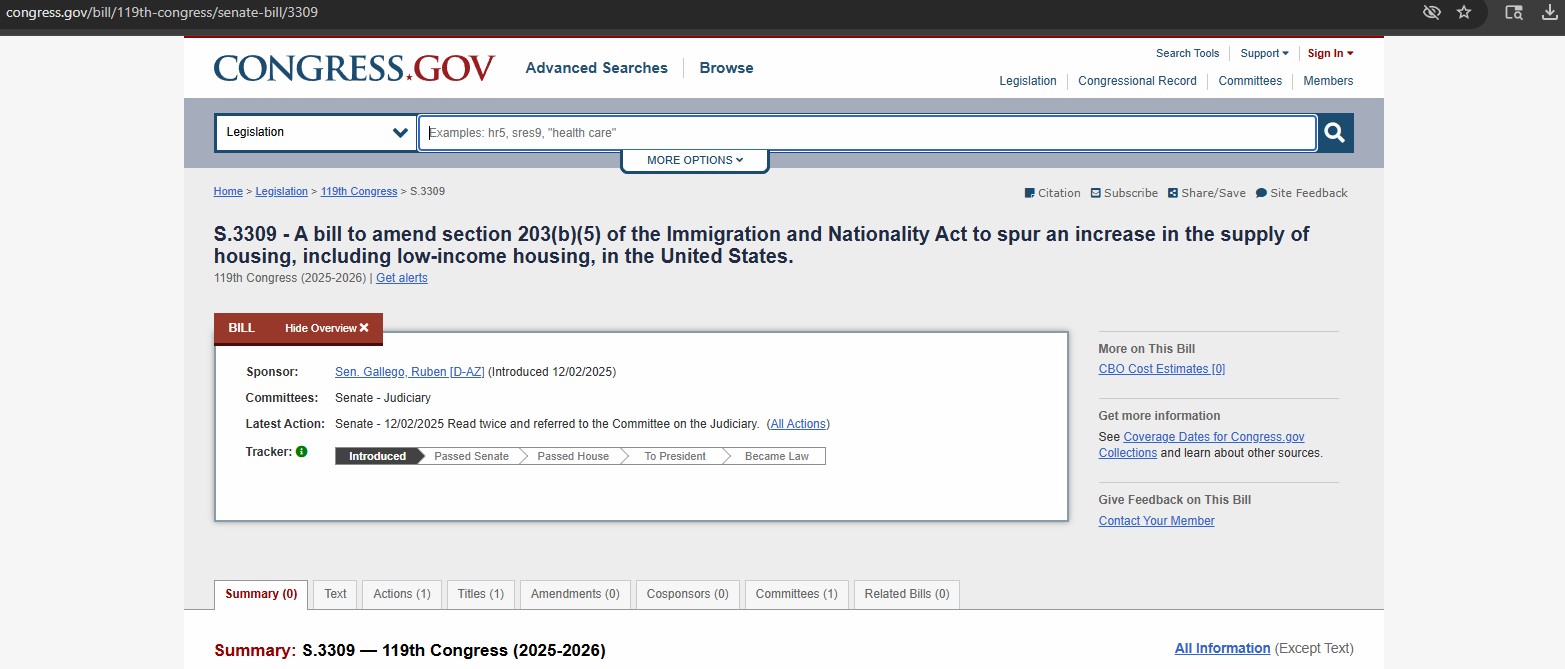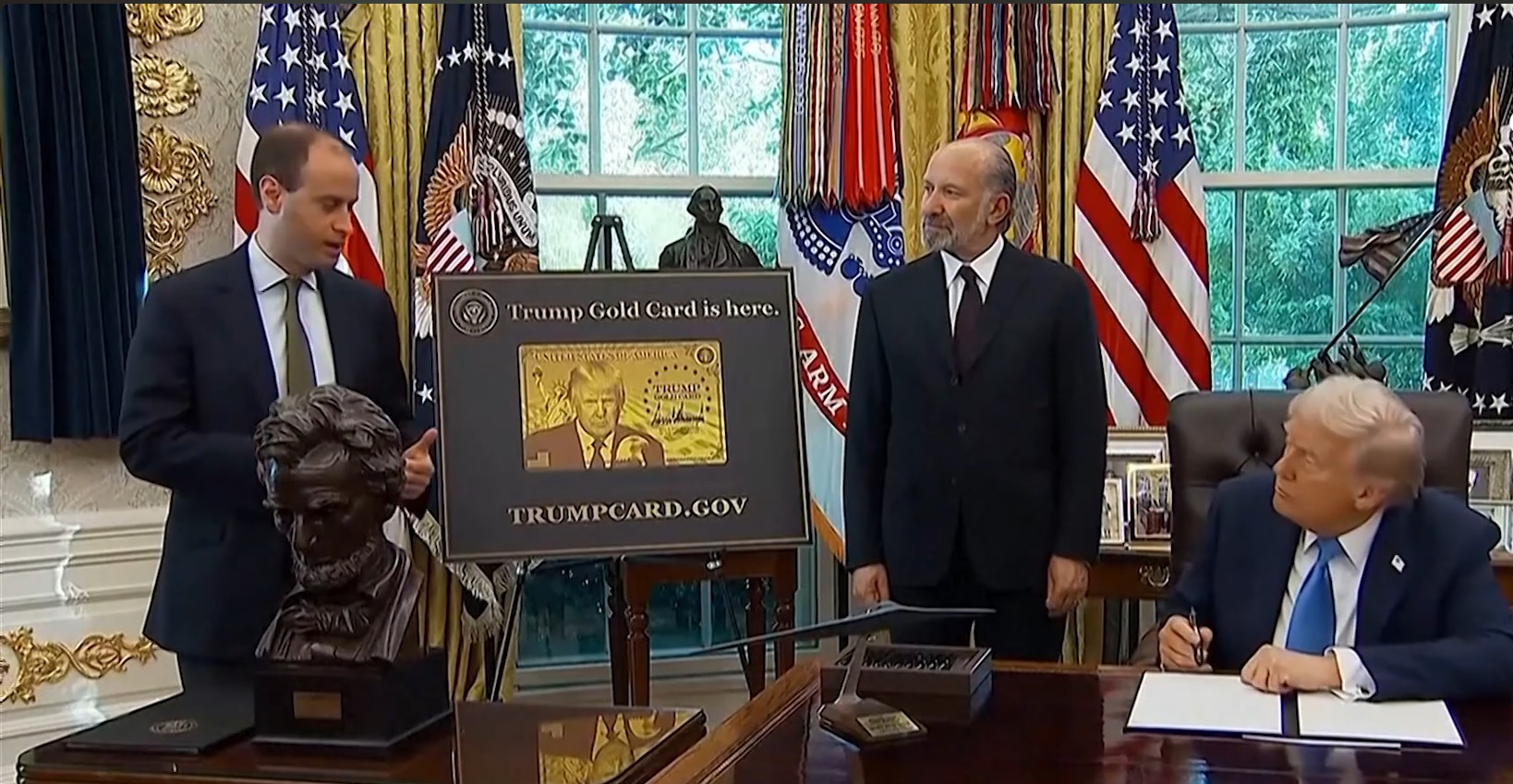With so many issues prevalent in the U.S. immigration process, visa backlogs have dominated the concerns of Eb-5 immigrants everywhere. AIIA analyzes and outlines the different institutional fixes proposed to fix EB-5’s backlog program based on their respective merits, feasibility, and favorability. If any of these solutions are implemented within the next year, the EB-5 program could see a massive overhaul of approvals and processed petitions.

The visa backlog is a problem which has caused thousands of prospective immigrants extreme duress and an inability to properly plan for their future. Children and students risk aging out as they approach the age limits on their parent’s petition. Investors and their spouses must put off employment opportunities, stall their careers, and make financial arrangements all while waiting anxiously for their priority dates to become current. Global events like the pandemic put people’s finances in jeopardy and health at risk, especially as petitioners grow older. Petitioners from countries which are retrogressed in the visa bulletin face waits of over 10 years to receive their green card, with the threat of this wait becoming much longer as visa adjudication remains nearly stagnant. Year by year, the immigrant visa demand grows while the supply remains too limited to properly address the growing backlog of EB-5 petitions. If this continues, both the stability and competitive advantage of the EB-5 program will be threatened by a lack of new petitioners, an overwhelming lack of legitimacy and trust from the immigrant community, and ongoing political gridlock regarding immigration issues.
At the very least, receiving a reasonable shot at a life in the U.S. or even reasonable processing times for petitions, should be a more standardized goal employed by the U.S. government to remediate some of these issues. Allowing for visa relief is one of the core ways in which Congress, the DOS, and the DHS can work together to address these concerns and get to the root of some of the most pressing problems which EB-5 investors and all immigrant petitioners face. There are various solutions to this issue which have been proposed on the Congressional floor, but all are faced with specific challenges and mixed support from the EB-5 community, especially given the different target audiences each proposal outlines. Below, we delve into some of these solutions and the likelihood of their success in passing through Congress and in implementation.
Increasing the number of Green Cards issued/more visa numbers
One of the most obvious solutions to the visa backlog is increasing the total number of green cards issued per year. The DOS currently limits green card issuance to 140,000 Employment Based (EB) green cards per year, as specified in the Immigrant and Nationality Act (INA) passed in 1990. Any unused visas from one year are recycled into different categories’ visa allowances for the following fiscal year (FY). For example, in FY 2022, DOS published the 2023 limit at over 281,000 EB green cards, including 65,000 unused green cards from FY 2021.
Increasing the total number of Immigrant Visas (IVs) issued per year across all visa categories would allow for the extensive EB-5 visa backlog to begin slowly resolving itself year by year, as the supply of unused visas slightly outpaces the demand. However, simply issuing more visas will not resolve the visa backlog entirely.
Core problems still prevent the hypothetical visa limit from allowing more EB-5 investors to finally access conditional residency. For example, with USCIS’s current adjudication rates (poor since 2019), EB-5 petitioners will still see the same, staggered rate of adjudication on their petitions, and the increased amount of unused visas will be rolled over to another visa category in the next fiscal year. Even worse, these unused visas could be lost to time, as has been the recent trend with lackluster adjudication rates across all visa categories.
What is the likelihood of this solution? The current U.S. Congress is not favorable towards increasing the annual cap of green cards. The closest attempt in the 117th Congress was increasing the limit proposed through the 2021 Resolving Extended Limbo for Immigrant Employees and Families (RELIEF) Act (S. 3721), which would increase the annual visa allowance for five years until backlogs were significantly reduced. This was proposed by Dick Durbin (D-IL) and EB-5 ally Patrick Leahy (D-VT) to specifically clear the EB backlog which has accumulated in the past decade. President Biden also proposed raising the annual limit through the U.S. Citizenship Act (2021), which also sought to raise the cap of visas. Neither of these measures passed.
Although these proposals are promising and encompass many solutions to solving the backlog alongside raising the annual visa limit, immigrants across the U.S. are more visible than ever before, and political parties use this to their advantage to divide public opinion. These bills often fail on the congressional floor due to divisive opinions about the role of immigrants in the U.S. economy.
Regardless, the immigration debate is contentious and passing a bill to increase the annual visa limit is nearly impossible in the current political climate. However, these proposals give us hope that Congresspeople are paying attention to the large backlog of applicants and the effect of these backlogs on the legitimacy of the U.S. Immigration system.
Country Cap Removal
In December of 2022, Representatives Zoe Lofgren (D-CA) and John Curtis (R-UT) promoted the Equal Access to Green cards for Legal Employment (EAGLE) Act as a part of the budget for FY 2023, which would remove the per country cap on employment-based immigration. Currently, per country caps limit immigration by country to 7% of the annual immigration pool (which amounts to ~9800 visas per nationality). Essentially, removing per country caps would permit countries which have been retrogressed in the visa bulletin for years to be shuffled into a single queue with non-retrogressed countries. This queue would not take nationality into consideration, but rather use date of filing to dictate adjudication priority.
With countries such as China, India, and Vietnam facing extensive backlogs in the EB categories, Congress has strived to find a solution; ending the per country caps is one of the main proposals. Similar bills that eliminate numerical limitations on employment-based green cards have been introduced in the Congress for the past decade, each with varying degrees of success.
Notable examples of these bills were Durbin’s 2021 RELIEF Act which sought to double the amount of green cards available by exempting spouses and minor children from the per country caps. Building on this legislative proposal, Rand Paul’s (R-KY) Backlog Elimination, Legal Immigration, and Employment Visa Enhancement (BELIEVE) Act (S. 2091), proposed in 2019, sought to exempt immediate family from the cap while also increasing the overall yearly limit for green cards by 130,000 (nearly twice the current annual limit), while also eliminating country caps. These bills promised to resolve the visa backlog within a decade, some as quickly as 2026. Another proposal, The Fairness for High-Skilled Immigrants Act of 2020 (H.R. 1044) passed both the House and the Senate, and removed country cap limits for EB petitions. However, under this act, the backlog is predicted to increase 160% by 2030, whereas the BELIEVE Act would have reduced the backlog by 74% in the same amount of time.
However, these acts overwhelmingly failed due to intense gridlock on the Congressional floor and lack of popular support, as well as the threat of not receiving a diverse group of immigrants in all fields (these proposals focused on medical and scientific researchers as well as engineers of all kinds due to specific needs from the COVID-19 pandemic).
The main point here is that country cap removal is relevant, and has permeated many immigration related bills in the recent past. Congress knows that the per country cap threatens the immigration system by exacerbating the backlog rather than promoting equality. Given the swell of recent proposals to remove the per country cap, we can expect that this provision will be challenged further in the future, as long as the backlog remains.
For EB-5 investors, removing per country caps would only benefit Chinese investors with earlier priority dates. All other investors, especially those who filed after the passage of the Modernization Bill in 2019, would then be forced to wait in line behind the thousands of Chinese applicants who have already waited nearly a decade for their visa. Tens of thousands of EB-5 petitioners will suddenly absorb the decade of delays incurred by the retrogressed applicants, all because Congress will have metastasized a visa problem instead of solving it.
AIIA has always supported measures to reduce immigration backlog for all countries, including backlogged countries like China and India. We support increasing the total immigration quota for all EB-5 immigrants and prioritizing investors’ interests. However, our advocacy protects all investors regardless of country of birth, and there are more favorable options for visa allocation which support both Chinese and Indian applicants without negatively affecting other petitioners.
What is the likelihood of this solution? As seen by the failure of the EAGLE act to overcome congressional gridlock and the failure of other country cap removal proposals, there is mixed bi-partisan support for removing per country caps, however, not enough to pass a proposal into law. Additionally, there is severe pushback from non-chinese immigrants whose current wait times for adjudication would skyrocket. Various organizations support this measure, rightly sympathizing with backlogged EB-2 and EB-5 investors who have waited for nearly decades and will be forced to wait in unreasonable queues. However, there is not yet enough political support in Congress to ensure per country caps would be removed forever. Additionally, removing per country caps would not address the root of the visa backlog, but would rather reorganize the order of petitioners in the backlog without shortening their wait time, meaning the processing times expected by applicants will shift without any real solutions implemented to address the backlog.
Removal of counting of derivatives
Another solution which has been proposed for solving this issue is removing derivative visas from an individual EB-5 petition. Subsection D, Section 203 of the Immigrant and Nationality Act allows for spouses and minor children to immigrate to be eligible for legal residency under the same immigration category as the petitioner. For example, EB visas allow for the primary applicant to include their spouse and any children under the age of 21 on their immigrant petition. When this petition is adjudicated for conditional residency, each individual receives one EB visa. Therefore, most of the EB-5 visas which are issued each year are given to derivative petitioners, AKA family members. The curre nt worldwide average number of visas attached to an individual EB-5 petition is 2.78. Using this average, we can estimate that over 54,000 individual visa applicants are attached to USCIS’s pile of pending petitions.
Using the same average of 2.78 individuals per petition, we can calculate that only 3,700 EB-5 petitions can be adjudicated and obtain visas under the current visa allowance for EB-5. However, if every EB-5 application granted one EB-5 visa to the original petitioner, either counting derivatives qas family based petitioners or grandfathering them under the primary petitioner’s visa, then 10,000 petitioners would be eligible to receive a green card for themselves AND their families each year. The practice of counting derivatives burdens the system with demand for more visas, and dramatically limits the amount of investors which are allowed into the states legally each year.
If immediate family were counted together under a singular visa, then the whole allowance of EB-5 visas available each year would be completely open to EB-5 investors, and the backlog could slowly be reduced. Congress has acknowledged this solution, and various bills have addressed counting of derivatives in their proposals. For example, since the 1990s, senators have been pushing against the counting of derivatives, clearly acknowledging the impact of admitting ~3000 petitioners and their families rather than 10,000 petitioners and their families. Even the language of the INA states that “Not less than 3,000 of the visas made available under this paragraph shall be reserved for qualified immigrants who invest in a new commercial enterprise described in subparagraph (A) which will create employment in a targeted employment area.”
Rand Paul introduced the idea of discounting derivatives in his BELIEVE Act, pointing to the fact that visas available to individual applicants per year would nearly triple, nearly utilizing all visas available annually to EB-5 visas. The RELIEF act also proposed ending the practice of counting family members against annual EB-5 quotas. Both failed, as mentioned before.
What Congress could do is rule that dependent petitioners be counted as “immediate relatives” rather than individual applicants, meaning they were exempt from being “counted against” (or subtracted from) the total annual visa allowance. The EB-5 program was designed to felicitate a large amount of foreign direct investment each year to American industry. It should also follow through on allowing the most amount of immigrant visas to be used by investors themselves, especially given the excruciatingly long backlog which has accumulated.
The INA rules that derivative applicants (family members) must be considered on the same petition as an application for the “same status” as the principal immigrant. This ruling was challenged in Weng v. Blinken in 2021, when the plaintiffs challenged the total number of derivative petitioners counting against the total annual allowance of EB-5 visas. The case was moved to dismiss, and no changes have come about since this case was filed. This provision has received mixed congressional support, as shown by the failure of Paul’s BELIEVE act and Durbin’s RELIEF act, and additionally receives no support from the judicial system, which may make changing this precedent difficult. Although counting derivative applicants against the total annual EB-5 allowance is one of the problems at the root of the visa backlog, it is unlikely that this solution will be upheld anytime soon.
Visa recapture
One of the most amenable solutions for Congress and EB-5 investors is a process called visa recapture. This practice, which has been accomplished by Congress multiple times in the past, is a legislative ruling to “recapture” visas unused and therefore forgotten, and add them (or “rcarry over”) to the next year’s visa allowance. Unused EB-5 visas are supposed to carry over to other visa categories in theory, however, there have been many years when unused visas have been rolled over into OTHER visa categories, such as family based or non-employment based. These visas are essentially lost from EB-5 forever, preventing immigrant petitioners waiting in long queues for years from receiving lawful status. With visa recapture, the original totals the DOS accounted for are not permanently lost at the end of the fiscal year and are returned to the employment based category, rather than accounting for other visa categories.
Visa recapture makes it possible that all unused IVs from the previous fiscal year are rolled over for all immigrant petitioners to claim. It also ensures that immigrant petitioners are not disenfranchised entirely when USCIS’s processing capacity wanes, as seen in 2019, 2020, and 2021. Over 15,000 IVs have been lost since 2005, which is the most recent instance of Congress-initiated visa recapture. To propose visa recapture on the floor of the legislature would only be fair, given the economic impact of EB-5 investments in the US economy and also the immigration fees which have already been paid decades ago to USCIS.
This proposal has been unanimously supported across the EB-5 world as well, as retrogressed immigrants from India, China, and the rest of the world would have a much greater opportunity to receive a visa without negatively affecting the chances of the other. AIIA has also supported this measure since our founding, given that this allows everyone who has waited in a long visa backlog an equal fighting chance at receiving residency in the US. It is a process which has been done before and can easily be done again, considering the current Congress’s proposals to recapture visas and the bipartisan support for such measures.
Likelihood of this solution: In the EAGLE act proposal, Senators Thillis (R-NC) and Sinema (I-AZ) proposed a bipartisan immigration reform framework which included visa recapture of over 200,000 visas (more than the 140,000 annual EB visa allowance). In fact, in the 117th Congress, over seven proposals for visa recapture were proposed, but none passed. Some of these proposals additionally included over 30 years worth of visas recapture. In 2000, Congress passed the American Competitiveness in the 21st Century Act, which recaptured almost 130,000 lost visas. In 2005, the Real ID Act recaptured 50,000 visas which had been left unused in previous years. All these recaptured visas were then issued before 2007. Since then, no legislation has passed to recapture visas, although many proposals have reached the congressional floor for deliberation.
The procedures which allow congress to order visa recapture have well-documented success with eliminating visa backlogs and promoting fairness with adjudication rates and the immigrant community. These procedures have been put in place to help USCIS address petition backlogs and account for events like the pandemic or the EB-5 program lapse, which prevent them from utilizing all available visas. It has been almost 18 years since the last visa recapture, and Congress should grant an overdue boost to the annual visa allowance.
What is AIIA doing to solve the backlog
Without addressing problems at the root of the visa backlog or targeting the entire affected group rather than a subset, the EB-5 immigration program will suffer in the long run, both by lost visa numbers which increase every year, as well as by slow processing and single file lines which increase wait times by decades at the very least. Visa recapture addresses these problems by temporarily raising the annual limit for immigrant visa allocation and allows for immigrants from China, India, and the rest of the world an equal fighting chance in receiving one of these visas for themselves and their families. It is a process which has worked before, and Congress is ready to do it again.
The American Immigrant Investor Alliance is committed to representing and protecting the interests of its core constituency – immigrant investors from all over the world who are using the EB-5 program to achieve their American dream. Our core philosophy has remained unchanged throughout the years – we will not support any legislative proposal that pits one community of immigrants against another, and changes the deal investors initially signed during their immigration process.
It is also important to note that even if we succeed with increasing the number of visas given out per year, the speed at which these visas are issued is another big issue. Actual implementation of this proposal could be hard if the issuing of visas continues to remain slow and unwilling to address the total amount of adjudications required to use up the total amount of recaptured visas.
AIIA is preparing to lobby the Congress to finally give relief to the tens of thousands of EB-5 petitioners who have waited years and sacrificed millions to live and work in the US. Although the other attempts at these solutions have failed, these examples demonstrate a strong precedent for recapturing lost visa numbers and a small bipartisan group of congresspeople who may be amenable to our cause when approached. For AIIA to begin lobbying for this effort, we require support from our immigrant investor community.
You can do this through funding our lobbying effort through a donation to the organization. Our fight begins when we have the tools and resources to reach congresspeople, advocate for the interests of all EB-5 investors, and illuminate the problems at the very root of the backlog, with context about the nightmare of redeployment, the please of parents with children aging out, and the life planning which has been stalled by nearly decades of wait times and arbitrary denials. The only way we can achieve this is through fundraising. AIIA has continuously lobbied for the benefit of EB-5 investors, and will continue to do so. The best way to assist us with this effort is showing your support through helping this cause.You can support our lobbying mission by donating to us or signing up to be a part of our community through our contact form.
We are determined to see the visa backlog eliminated, and immediate relief given to investors who have waited years to see their permanent green card. Investors have already paid their end of the deal. Now it is time for Congress to ensure that USCIS does the same.
Related Posts

We Congratulate Senator Gallego for New Legislation that Leverages the EB-5 Program to Build Affordable Housing

We Won The EB-5 Fee Increase Lawsuit

One Year Left to Invest in a EB-5 Regional Center Project

Trump Gold Card: A New Green Card Pathway Competing with EB-5

Stay Up To Date With AIIA
Join our newsletter to stay up to date on EB-5 updates.
By subscribing you agree to with our Privacy Policy and provide consent to receive updates from our company.
Recommended Resources

The Issue of Aging Out in EB-5
The Child Status Protection Act (CSPA) helps freeze a child’s age on EB-5 petitions, but long visa backlogs still risk...
Read More
The Sale of EB-5 Securities Offerings
EB-5 securities sales often use Regulation D (U.S. investors) and Regulation S (foreign investors) exemptions to avoid SEC registration while...
Read More
Choosing between Direct vs Regional Center EB-5 financing
Direct EB-5 suits single investors creating direct jobs; Regional Center EB-5 pools multiple investors, counting direct and indirect jobs for...
Read MoreRecent Blog Posts

We Congratulate Senator Gallego for New Legislation that Leverages the EB-5 Program to Build Affordable Housing
Sen. Gallego's EB-5 bill mobilizes foreign capital to build affordable housing. This collaboration has boosted AIIA's Congressional ties & credibility...
Learn More
We Won The EB-5 Fee Increase Lawsuit
AIIA successfully won its lawsuit against USCIS’s April 2024 EB-5 fee increases, with a federal judge ruling that the agency...
Learn More
One Year Left to Invest in a EB-5 Regional Center Project
AIIA warns that EB-5 Regional Center investors will lose protection after Sept. 30, 2026 unless they file I-526E petitions before...
Learn More
Trump Gold Card: A New Green Card Pathway Competing with EB-5
Trump’s new $1M “Gold Card” visa plan competes directly with EB-5 and raises serious legal concerns, as it lacks statutory...
Learn MoreGet In Touch With Us
If you have any questions, inquiries, or collaboration proposals, please don’t hesitate to reach out to us.

Responses (0)